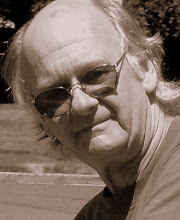





Small pleasures: I will walk across the street to look closely at a car if the logos on the hubcaps line up. If I am waiting for a green arrow traffic light and the blinkers on the car in front are in synch with mine, I smile.
When the outside temperature and inside temperature aligned recently, I grabbed my camera (see image).
Bookmatching wood brings the same kind of delight to this instrument maker.
The process is simple: A board, thick enough to warrant getting sliced in two and narrow enough to fit in the larger bandsaw (7.5 inches) gets opened up to reveal mirror images. It's a traditional look on acoustic instruments, including the violin family and ranging through all the fretted instruments even into electrical ones.
How this came about is unclear but perhaps this explains: Resawing was the way to make larger boards into thinner ones (imagine apprentices working a pit saw) and, in the interest of speed, boards were arranged and glued edge to edge to make larger boards and put onto instruments. But some, by chance bookmatched, looked more interesting and pleasing than others, and thereupon became the gold standard.
Even resawn, the boards for Ed Goode's six string Barker Bass offer choices: They can be arranged A edge to A edge or B edge to B edge (see the drawn figure; select two boards for one type pattern, move over one board and look at the two boards for the alternative).
Then I look for how the pattern will appear on the body. The body's lower bout (widest portion) is the larger palette--it is not interrupted by pickups, bridge and controls. I like to see visual weight there, preferably about centered on each side.
In cabinet making, the rule for bookmatch is "cathedrals up" which means arches or arrows point vertically. Often on the Barker I look for an arrow down in the center so the long, triangular tailpiece sits roughly parallel to those lines. (You can see this illustrated in a pair of the boards in the sketch.)
It's a privilege to be making these decisions. As for Ed's bass, the rare curly fir pattern is so consistent throughout that finding a nice mirrored puff for the lower bout was the only decision required.
And that other picture, of the fence in the alley about four blocks from our house? Look closely--two are bookmatched!
Harmony and symmetry surround us, there for our delight.


No comments:
Post a Comment